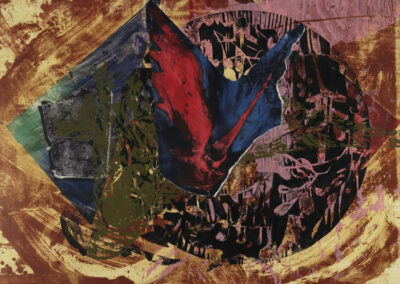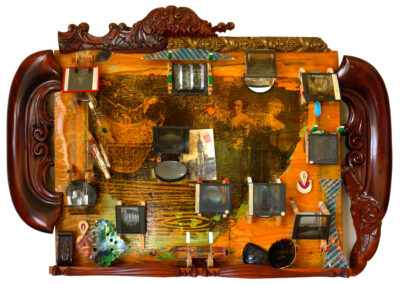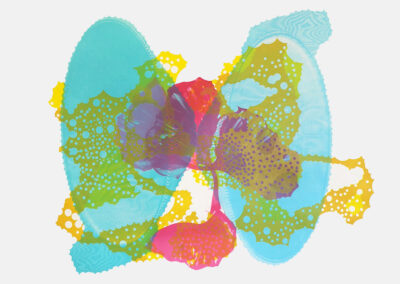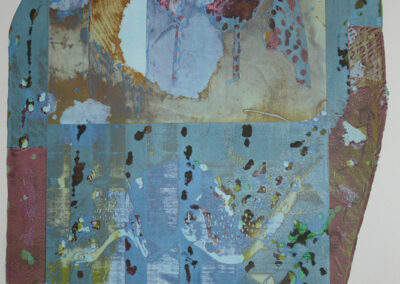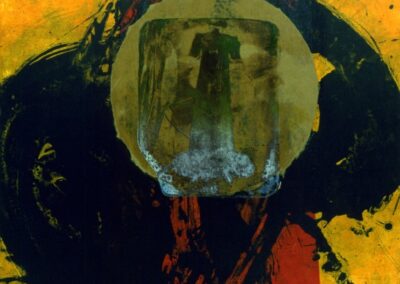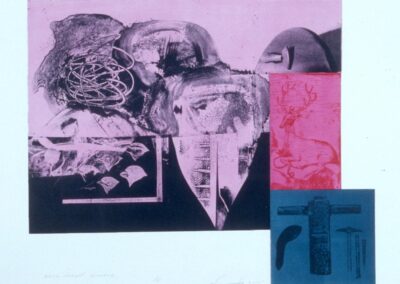Our latest Artist You Need To Know is Otis Tamasauskas. He is a Master Printer, who was born in Terschenreuth, Germany in a displaced persons camp in 1947, following his parents’ flight from Lithuania after the Russian communist occupation in the period right after World War II. Tamasauskas’ artwork – primarily in the sphere of printmaking, especially lithography, but sometimes branching out into sculpture and mixed media – incorporates ‘found artifacts, integrating objects such as pelts, clumps of horsehair, and wood panels to explore interior landscapes.’ (from his site)
His family came to Canada in 1952 (Niagara Falls and later settling in Toronto in 1954). He earned a BFA from the University of Windsor, Ontario, in 1974, and went on to work at Open Studio, in Toronto, where he became Director of Etching. Tamasauskas is also a member of the Royal Canadian Academy of Arts.
-

Jumping Jack, 1982
-

Red Bird Artemesia 1991
-

Arabian Sea I, India Series, 2011
-

Baroque Fragment Reflections, 2016
-

Red Flower with Echo, 2018
-

Repeating Echo, Terra Nova, 2018
Critic Deirdre Hanna has offered the following about Tamasauskas’ work: “His prints operate on an abstract level as wall art, but closely viewed they reveal themselves as Jungian in construction: the Aberdeen Series is a refinement of the self-referential veil-of-ink motif.”
A defining aspect of Tamasauskas’ aesthetic is his heritage as a Lithuanian. His interest in Lithuanian folk art began as a child, when he traced Lithuanian symbols in books on Lithuanian folk art and design. But he has also always expressed an interest in print, and a great facility in that medium: “When I made my first print… knew this was it, it was what I wanted to do, in life. I guess, the idea of being able to use a plate, or block; print it many times, side by side, sequential images provided a vicarious explanation of obsessive patterns that reoccur in Lithuanian folk art, and design, relating to my early visual experiences.”
-

Harp 2, 1991
-

Untitled, 1998
-

Migration (Osprey Series), 2007
-

Light Blue Wing (Osprey Series), n.d.
-

Artemesia (The Golden Bird). n.d.
-

Shadows 2, 2012
One of the markers of Tamasauskas’s unique practice is that he eschews the ‘conventional’ strictures of printmaking, and collage – with both paper but other mixed media – is an important element of his art, offering textural surfaces that are engaging. Numerous series employ this (and many of these works can be seen here, at his site). Trout and Orchid and Shorebird P.E.I. (both from 1980) use collage, but still incorporate the best elements of traditional printmaking. But in later works, Tamasauskas uses sheets of metal and carved wood nailed to board, in tandem with prints on paper, to both formally and symbolically convey his ideas. All of his prints are process oriented, going through numerous press runs and other phases that are intended to “infuse the work with a different quality that enhances the overall design, colour and texture.” Tamasauskas has stated that “there is an intimacy with paper which allows an artist to communicate a brief passage or a fleeting idea which is too fragile to convey with a big canvas or masonite or any other structural material.” (from here)
Tamasauskas has exhibited widely, in Canada, the United States and abroad. Notably, in 1982 – 83, the Art Gallery of Guelph mounted a travelling exhibition of his work, and another exhibition (Amalgam) was at Open Space in Toronto in 2019. More about that exhibition can be seen here. His work can be found in many corporate and private collections, notably the National Gallery of Canada, Art Gallery of Ontario, Vancouver Art Gallery, and the Room’s Art Gallery of Labrador, Newfoundland.
-

Fading Forest Series, n.d
-

The Martyrdom of St. Lawrence and the Miracle of St. Nicholas, 2005
-

Fragmented Selections: Blue Grass and Green Rabbit, 2012
-

Lansdowne Handkerchief Series #12, n.d.
-

Untitled, 2011
-

Untitled, 2011
Besides his own artistic accomplishments, Tamasauskas has helped shape a generation of printmakers in Canada (and beyond), as he taught printmaking at McMaster University (Hamilton, 1978 to 1980), Scarborough College, University of Toronto (1978 to 1983), and Queen’s University (Kingston, beginning in 1980, where he worked with J.C. Heywood, a fellow master printmaker, painter and fibre artist).
More of Tamasauskas’ work can be enjoyed at his site, including his archive section.

